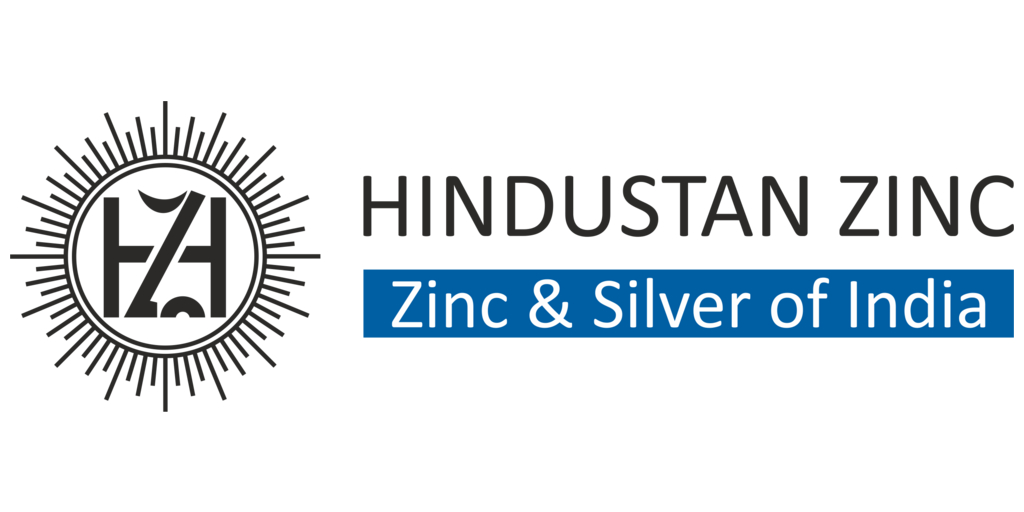Conventional approaches to strategy have had to adapt in recent years, with rapid technological change and buffeting from external forces. In this episode of Inside the Strategy Room, the authors of the new book, The Imperfectionists: Strategic Mindsets for Uncertain Times, talk about how companies can benefit from acting quickly to take many smaller yet still bold steps. Charles Conn is an investor, environmentalist, entrepreneur, and McKinsey alum. Rob McLean is a director of the Paul Ramsay Foundation, Australia’s largest philanthropic foundation, a trustee of the Nature Conservancy in Australia and Asia, and the former dean of the Australian Graduate School of Management. He is also a McKinsey director emeritus. This is an edited transcript of their conversation. For more discussions on the strategy issues that matter, follow the series on your preferred podcast platform.
Sean Brown: Why did you write this book and why is it titled The Imperfectionists?
Charles Conn: The world today feels very topsy-turvy, with both economic and other types of dislocation. Setting strategic direction, whether for nonprofits or otherwise can be really difficult. We’re seeing paralysis as people wait for some kind of equilibrium or stasis to reemerge. Or they get nervous and leap before they look, whether it’s an acquisition or some other move. We wanted to lay out a different path that involves confidently stepping into risk by using a set of six mindsets that we put under the broad heading of imperfectionism.
Imperfectionism sounds like a bad thing, but what we mean is accepting the ambiguity of not having perfect knowledge before making strategic moves. Companies and nonprofits can make a series of small moves that help them build knowledge of the uncertain world they’re operating in, and slowly add capabilities, assets, and other forms of advantage so they can essentially bootstrap themselves into strategic position, rather than making the wrong type of bold leaps or being frozen in stasis.
Sean Brown: Is the world changing so quickly that the conventional approaches to strategy that many of us learned in business school are now obsolete?
Charles Conn: We’re not saying those things are wrong, but rather that in a world where things are changing very quickly and fundamentally, those approaches can yield either incomplete or misleading results. The kind of uncertainty that we face today really is twofold. One is the type we see in the newspaper, which is economic uncertainty, external shocks like the war in Ukraine. But there’s a much more fundamental kind of uncertainty we face now, which is very rapid technological change. Artificial intelligence, automation, programmable biology, and other disruptions are blurring industry boundaries and what it means to be a competitor in a particular industry.
We’re also seeing the rise of supercompetitors like Apple, Amazon, and Google, which can operate across many industry spaces. The overall context is that the disruption in your particular business or nonprofit space is just as likely to come from outside your industry as from an established rival that you know already. That’s why this dual kind of uncertainty makes it that much harder to develop strategies using the conventional approaches.
We have to accept that the way we progress will be more like rugby: a series of forward, backward, and sideways moves, and accepting that a number of the moves we make will fail—this is where the term imperfection comes from.
Charles Conn
Sean Brown: Do organizations need to increase the cadence at which they run their strategy processes, in addition to changing the way they formulate and implement their strategies?
Charles Conn: The annual approach to strategy development really isn’t at the speed that we’re operating today. In the world of big data, artificial intelligence, and other disruptive technologies, we need to be doing strategy much more real-time. It needs to be more dynamic, guided by audacious questions at the top level, but also actualized by people working much closer to the front line. It’s a question of how we pursue our objectives. Rather than a plan that looks like a game of chess or linear programming, we have to accept that the way we progress will be more like rugby: a series of forward, backward, and sideways moves, and accepting that a number of the moves we make will fail—this is where the term imperfection comes from. It’s also actually being okay with that, and making sure that we don’t punish teams for failure, especially where those failures are modest in terms of the total outlay, and are reversible. Those are two really important concepts for imperfectionists to remember.
Sean Brown: How do you bake that into an organization’s performance management approach?
Charles Conn: You just need to do it. You can tell people that you’re not going to punish them for making small mistakes, but they’ll never believe you until they see it. Celebrate teams that make sensible, calculated moves, including moves that don’t work. And compensate them in the same way you do with teams that happen to be successful.
Sean Brown: We’ve talked a lot on this podcast about why it’s important to stay the course in times of uncertainty. How do you square the need to make a series of smaller, more agile moves with the need for a bold, long-term focus?
Charles Conn: As chair of Patagonia’s board, I have had the great honor of working with [Patagonia founder] Yvon Chouinard over a long period of time. You’d find very few companies as unwavering in their top-level mission as Patagonia, which is now in its 50th year. But how we execute that mission changes all the time. And if you ask Melinda, Yvon’s wife, she’ll say, “We reinvent the company every five years.” And so our vision is on a horizon that’s everlasting, and our way of delivering that is one that has to alter and change with the environment in which we live.
What Yvon says is, “You can do perfect scientific planning of how you move a company forward. And by the time you’ve done that, someone else will have beaten you to the market.” It’s a much better thing to take a step forward, assess how that’s gone, and either take another step forward or a step back. It’s a faster process. Is imperfectionism fast enough? Well, it’s certainly faster than making a giant acquisition that is a poor fit and then spending years digging out from that.
Rob McLean: It’s also faster than the risk aversion that we see in so many companies, where they’re waiting for certainty, and for moves to have 100 percent probability attached to them.
Charles Conn: You need to have a big enough bite. Agility is good, but it can lead you to aim too low. You can think in terms of a staircase: it’s an incremental approach to getting someplace, but as long as the horizon where the staircase is going to is audacious enough, we think you avoid the incrementalism that can be a potential pitfall when making smaller, more agile moves.
Sean Brown: You write about different types of mindsets in your new book. Can you take us through them, starting with the first one, Ever Curious?
Charles Conn: It starts with an audacious question or a long-term vision. The mindsets that we believe are important are first and foremost curiosity. That sounds simple and obvious, but it’s surprising how many management teams forget to ask the question “why?” and then they might not see that the framework they grew up with is not necessarily correct for the view ahead.
Sean Brown: What kind of question would qualify as audacious?
Rob McLean: I’ll give the example of the daughter of [the inventor and Polaroid Corporation founder] Edwin Land. They were on holiday in Santa Fe in the 1940s, and after her father took a picture of her, she said, “Can I see the photograph, Daddy?” Instant photo developing had not been invented yet. His company was making polarized sunglasses and films for scientific applications. His daughter’s question got him thinking, and quickly led to the extraordinary innovation of the Polaroid instant camera.
Sean Brown: How can companies cultivate a culture where these questions come up and people act on them?
Rob McLean: It’s important to be in the flow with time and space, so that audacious questions bubble up and get asked. And to pay attention to things like novelty, gestation, and safety. We’re all familiar with the situation of someone being told, “That’s a stupid question.” That’s the kind of thing that puts an end to curiosity.
Sean Brown: The next mindset in your book is Dragonfly Eye. Why do you call it that?
Rob McLean: We love the dragonfly with its two, very large, compound eyes that have some 30,000 lenses. Some of our listeners will be familiar with the work of Philip Tetlock [and coauthor Dan Gardner, who wrote Superforecasting: The Art and Science of Prediction]. They talk about using multiple lenses to make better decisions. We’ve taken that expression from Tetlock and Gardner and used the idea of the dragonfly eye to think about how you can add lenses and widen the aperture to broaden your view of a situation.
An example of that is the Invisalign orthodontic aligners company, which was started by a Stanford MBA student who had just had his teeth straightened with metal braces and was given clear plastic retainers as a final step. It occurred to him that a series of retainers could likely do what metal braces do, less invasively. He brought the customer lens to his thinking and came up with an extraordinary innovation.
Sean Brown: But a business school student has little to lose—they’re operating from a place of curiosity and freedom that’s very different from an executive on a management team who is expected to produce consistent results.
Charles Conn: A big part of it is really not thinking of strategy as a separate thing from operations. We tend to stovepipe different functions in companies, and it’s a mistake. Everyone in your company should be a strategist. Audacious questioning should be led from on high and permeate down, so that ideas from the front lines are free to flow up. The more we can draw actual strategy development from people who are working on the front lines, the better.
At Patagonia, we’ve recently introduced a food business, Provisions, and Workwear, which is literally clothes that people wear to work in dirty and dangerous businesses. Both came from ideas developed on the front lines. We don’t know if they’re going to work, but we praise the team when they make forward progress, and we encourage them when something doesn’t work. The way you do that is to have every week’s operation meeting also be a strategy meeting at the front line.
Rob McLean: We can get very grooved into the way we look at businesses. If we’re in software, we’ll say, “Oh, this is a SaaS business and therefore…,” or “We’re a platform business that’s got increasing returns to scale.” What we’re saying is, think about some other ways that you might view the business, and test them. Get out of the groove. So often this is the path to insight.
Sean Brown: Who is responsible for setting the audacious goal? Is it the CEO or an innovation leader?
Charles Conn: The way we’ve seen it work the best is when instead of having a single leader who’s this knight on a horse off by herself or himself, you have very flat management teams that meet frequently and have lots of ideation that bubbles up from below. You’re looking for the combination of planning, aspiration to grow and be in new businesses, and serendipity. You want to be awake and aware of seeing things through different lenses. You want to tap into the serendipity of the nonplanning element.
Sean Brown: How can executives bring these kinds of ideas to their organization?
Charles Conn: People need to feel listened to. Your people have fantastic ideas, but there’s nothing more boring than being told to stay in your lane. You need to change incentive structures so that people aren’t penalized for working on the side. You want to give people time and space to be in the flow of ideas and be curious. And to reward people when those ideas lead to seeing things through different perspectives and generating new ideas for expansion.
Sean Brown: How do you get investors to come along for the ride here when they’re looking for quarterly results?
Charles Conn: There’s always going to be a tension with external investors and other audiences. Be transparent, and tell the truth. It’s very simple to say, “We’re going to put 20 percent of our investment into crowdsourcing new ideas,” or “10 percent of our investment’s going to go into moonshot ideas.” And to be honest with your investors about what you’re doing.
We take our hats off to the people who take those risks, get the insights, and move forward, particularly when others around them are thinking, ‘We just need to wait a little while before things settle down.’
Rob McLean
Sean Brown: Rob, can you take us through the next mindset, Occurrent Behavior, which is about generating new data and experimenting?
Rob McLean: Most of us who took statistics in college learned something called Bayes’ rule, which says that in determining probability, you start off with your prior beliefs for the prior probability. You collected data and evidence, and then you updated your beliefs. We feel that this is a terribly important way to go about things when you’re facing high levels of uncertainty. This insight can come from creating new data, which may be things like A/B testing or pilots or new tools. We don’t see anywhere near the level of experimenting that we would like to see. And we take our hats off to the people who take those risks, get the insights, and move forward, particularly when others around them are thinking, “We just need to wait a little while before things settle down.”
Sean Brown: Accessing that new data is addressed in the next mindset, which is about tapping into Collective Intelligence. Tell us more about that.
Rob McLean: Whenever we talk about collective intelligence, we tend to think about bringing the smartest people together. But we like what Sun Microsystems co-founder Bill Joy, said: “It’s better to create an ecology that gets all the world’s smartest people toiling in your garden for your own goals. If you rely on your own employees, you’ll never solve all of your customer needs.” There are ways to crowdsource expertise through collaborative or competitive means, especially with AI-enabled collective intelligence.
For example, the Nature Conservancy was looking for a way to more accurately monitor quantities of tuna caught, and turned to Kaggle [the machine learning and data science community] and opened a competition to find a way to identify tuna species and quantities on the backs of fishing boats. Some 2,293 entries came in with machine-learning solutions that had something like 90 to 95 percent accuracy. The Nature Conservancy in effect bolted on a capability by reaching out to the collective intelligence of a large machine learning community, and now has trials on fishing boats in Indonesia.
Sean Brown: Can you give us an example of an organization that has really embraced this mindset of strategic imperfectionism?
Charles Conn: We’ve described Amazon as an imperfectionist. When they started their consumer financial services business, instead of using their giant balance sheet to acquire a big bank or financial institution, they used relatively humble steps. They had something called Pay With Amazon, and invested in a little company called Bill Me Later. They acquired a company called TextPayMe. They hired a team from GoPago. They launched a business called Local Register.
Three out of those four or five early steps looked like they failed. But while that was going on, Amazon was building internal competency, hiring capabilities, and acquiring IP. Eventually they launched Amazon Pay and their own credit card services. So from very humble steps, they positioned themselves as one of the major players in consumer financial services.
Sean Brown: Charles, can you take us through the last mindset, which is Show and Tell?
Charles Conn: The whole idea here is to be much more compelling about how you build support for these ideas. When Rob and the Nature Conservancy were meeting with a big bank donor, they cleverly lined up 17 ten-liter plastic buckets against the back wall of the room on a credenza. The people from the bank came in and said, “What’s that about?” Rob said, “We’ll get to that in a minute.” The pitch was about raising funds for creating shellfish reefs in marine estuaries, which suffer from runoff of fertilizer and other pollutants. Each oyster in a reef filters 17 buckets of water a day, 170 liters a day, and cleans that water. Rob could have had a PowerPoint slide that said, “Each oyster does 170 liters a day.” The visual approach was much stronger. It means speaking to people’s values, not just speaking analytically.
Sean Brown: Any parting words of advice?
Rob McLean: Take a moment to ask questions about how you operate: Are we asking these audacious questions that would change strategy? Are we too grooved into the lenses we use for looking at problems? Are we taking action based on probabilities, rather than assuming certainty? Can we really view our strategy as a staircase, with steps progressing toward significant goals over time, with setbacks included? These questions are almost a diagnostic of the way you deal with uncertainty and approach strategy under high levels of uncertainty.




